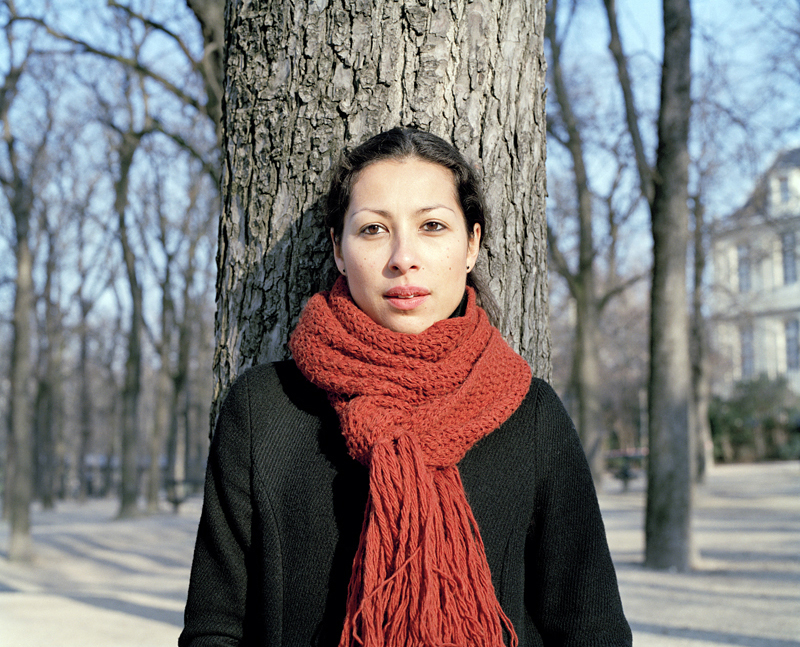Animaux Sacrés by Noni Benegas
-Reviewed by Claire Trévien-
It’s an act of triple filtering to want to share the poetry of Noni Benegas, translated from Spanish into French, and now shared with you in English. Although an English translation of her poems, Burning Cartography, was published in 2007, I have to admit that it’s sheer luck while riffling through the Saint-Denis bookshop Folies d’Encre that led me to her work. Yet, Benegas is no novice, born in Argentina, she moved to Spain in 1977 and has won numerous accolades for her work in the years since, including the prestigious Esquío, Platero and Miguel Hernández Prizes. This particular collection, Animaux Sacrés et autres poèmes (‘Sacred Animals and other poems’) was published as a part of a literary festival in Sète called Voix Vives, celebrating Mediterranean poetry in all its languages. It’s published as part of a series of identical-looking pamphlets with ribbed jackets, and the signature image of a boat.
(I am not a fluent Spanish reader, so will only share the French translations as that is what my ham-fisted translations are based on.)
The sacred animals of the title feature most prominently in a sequence of the same name, a series of vignettes in which animals take on different roles within the family. They are the sacred animals of flatly calm lunches, they are injured like a father before a feast, they are an invisible noose, they have fallen to the ground, they wrap around you:
which stops him from breathing around
and is like a continental platform
isolating itself
the same as on the maps
when he was a child,
of the vast ocean.
He doesn’t let it
reach other lands
with the deep blue, the navigable,
no the yellow swampy sandiness
of the edge.(‘qui l’empêche de respirer alentour
et est comme plateforme continentale
qui l’isole,
pareil que sur les cartes
quand il était enfant,
du vaste océan.
Il ne laisse pas
atteindre d’autres terres
par le bleu profond, le navigable,
non le jaune marécageux sableux
du bord.’)
Unlike many of the other poems in this collection, Benegas allows herself to play with fractured language in this sequence. Sections halt their words out, evading sense, making links hard to fathom from the outside. This a poem about the impenetrable rituals of a disharmonious family – with delusions at every corner, like the final section, where the illusion of motherhood is compared to a little bear playing with a toy female version of itself, but which ultimately ‘doesn’t respond, is cold’ (‘ne répond pas, est froide’). Scared Animals makes us feel stuck in a Mad Hatter’s Tea Party type of horror, far from the whimsy of hipster appropriation.
Nothing is quite what it seems in Sacred Animals, especially Family and its associations. In ‘La Maison’ (‘The House’), Benegas asks how one could dissolve a house, dismantling each of its relationships, its walls, until it is down to asking how to ‘wipe / away the absence of a father / installed with a rage of dust in the emptiness.’ (‘Comment, une fois la maison tranquille, effacer / l’absence du père / installé avec une rage de poussière dans le vide’). It’s a showstopper poem, hovering between predictability and instability. The language is clear, as is the premise, yet Benegas still finds ways to dart in the unexpected: the house has a ‘cinnamon’ structure, the windows frame a ‘livid’ childhood…
The theme of an unstable home also features in ‘Caryatid’ (‘Cariatide’), named after the architectural feature: a sculpted woman which replaces a column as architectural support:
Was she a caryatid or was she just pretending?
We don’t know, but she let everything
slip, let it collapse
with or without clatter.(‘Était-ce une cariatide ou le feignait-elle?
Nous ne le savons pas, mais elle a tout laissé
filer, laissé crouler
avec ou sans fracas.’)
Again there is a sense of disappearing ‘you could say / that things evaporated from her’ (‘on pourrait dire / que les choses s’évaporaient d’elle’). Even in poems that are seemingly about art, such as ‘Morandi’, this threat remains, the still life of bottles reminding the narrator of:
the horizon cut out by heads high and low
on family photos,
wipe away the identity
of each in these paintings.And this ambiguity keeps them alive.
(‘l’horizon découpé par têtes hausses et basses
sur les photos de famille,
efface les identités
dans chacun des tableaux.Et cette ambiguïté les fait vivre.’)
Sacred Animals covers an impressive amount of material in a short space of time. Although the overriding theme might be defined as family and its architecture, the vessels used to explore them are varied, from artists like Morandi or Kahlo, to Persian history, to Luce Irigaray,… As the pamphlet progresses, these tightly-wound themes unknot, finding in the exuberance and strangeness of the outside world as much to fascinate as in the domestic. I’ll end on ‘Ardent Cartography’ (‘Cartographie ardente’):
Could autumn be
brambles
a thread that snakes
between rocks,
undecided canvas
in the net of your eyes?Could its acute pulse
feel your edges
unfold you
like a new map
-ardent cartography-
compromise my ways
retrace yours?If there was autumn
that’s how it’d be.(‘L’autommne pourrait-il
etre brousailles,
un fil qui serpente
entre les roches,
canevas indécis
dans le filet de ton regard ?Pourrait-il, pulsion aigue,
sentir tes bords
te déployer
comme une carte nouvelle
— cartographie ardente –,
compromettre mes chemins
rebrousser le tien ?S’il y avait de l’automne
ce serait ainsi’)




